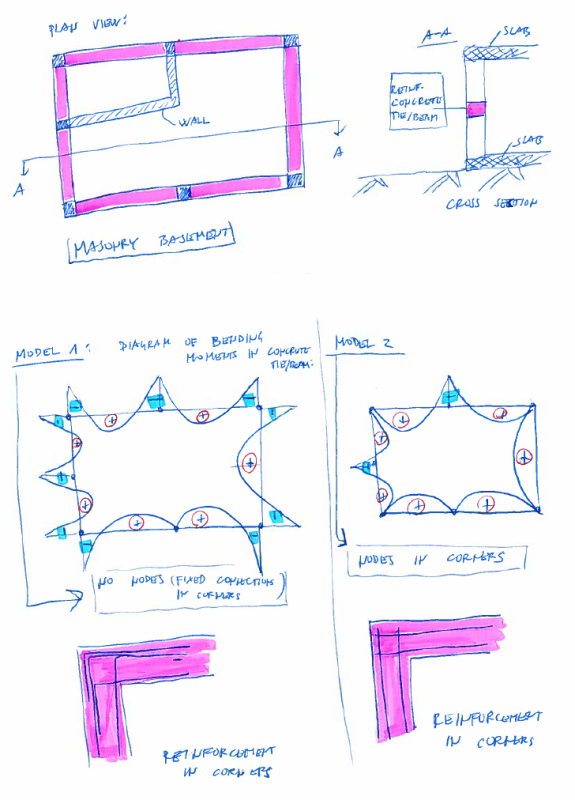n3jc
Civil/Environmental
- Nov 7, 2016
- 189
I think this is a question for engineers from EU.
We have masonry basement, so we need to make horizontal concrete tie/beam at 1/3 height of the masonry basement wall. This concrete tie is needed because of horizontal forces (soil pressures).
Im wondering which model is correct?
1.) there is no node in corners - fixed connection between ties/beams from differen directions
2.) there is a node
Its imporatant because the diagram of bending moments is very different in both casses.
What do you suggest?

We have masonry basement, so we need to make horizontal concrete tie/beam at 1/3 height of the masonry basement wall. This concrete tie is needed because of horizontal forces (soil pressures).
Im wondering which model is correct?
1.) there is no node in corners - fixed connection between ties/beams from differen directions
2.) there is a node
Its imporatant because the diagram of bending moments is very different in both casses.
What do you suggest?



![[bigsmile] [bigsmile] [bigsmile]](/data/assets/smilies/bigsmile.gif)